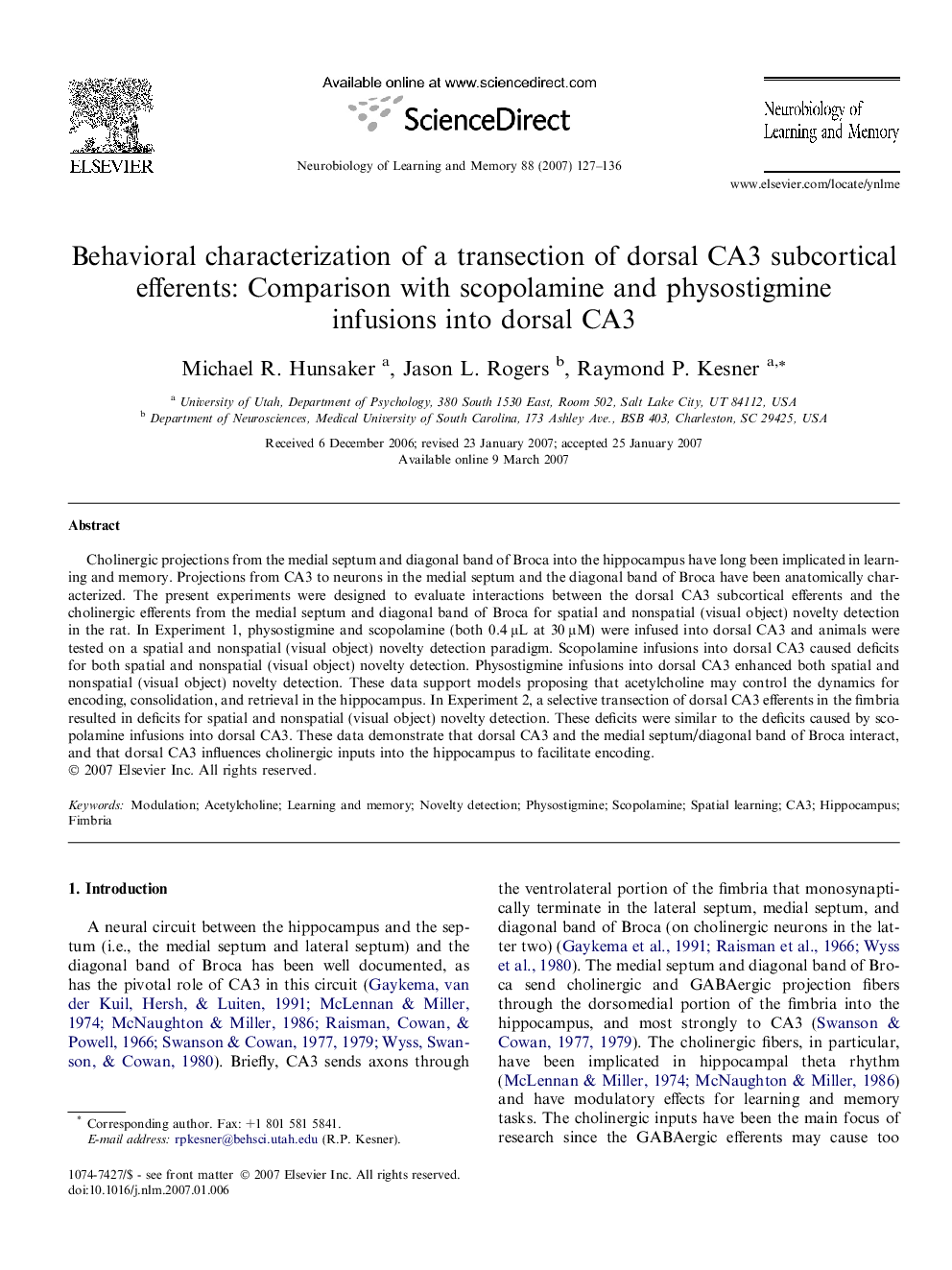| Article ID | Journal | Published Year | Pages | File Type |
|---|---|---|---|---|
| 937261 | Neurobiology of Learning and Memory | 2007 | 10 Pages |
Cholinergic projections from the medial septum and diagonal band of Broca into the hippocampus have long been implicated in learning and memory. Projections from CA3 to neurons in the medial septum and the diagonal band of Broca have been anatomically characterized. The present experiments were designed to evaluate interactions between the dorsal CA3 subcortical efferents and the cholinergic efferents from the medial septum and diagonal band of Broca for spatial and nonspatial (visual object) novelty detection in the rat. In Experiment 1, physostigmine and scopolamine (both 0.4 μL at 30 μM) were infused into dorsal CA3 and animals were tested on a spatial and nonspatial (visual object) novelty detection paradigm. Scopolamine infusions into dorsal CA3 caused deficits for both spatial and nonspatial (visual object) novelty detection. Physostigmine infusions into dorsal CA3 enhanced both spatial and nonspatial (visual object) novelty detection. These data support models proposing that acetylcholine may control the dynamics for encoding, consolidation, and retrieval in the hippocampus. In Experiment 2, a selective transection of dorsal CA3 efferents in the fimbria resulted in deficits for spatial and nonspatial (visual object) novelty detection. These deficits were similar to the deficits caused by scopolamine infusions into dorsal CA3. These data demonstrate that dorsal CA3 and the medial septum/diagonal band of Broca interact, and that dorsal CA3 influences cholinergic inputs into the hippocampus to facilitate encoding.
